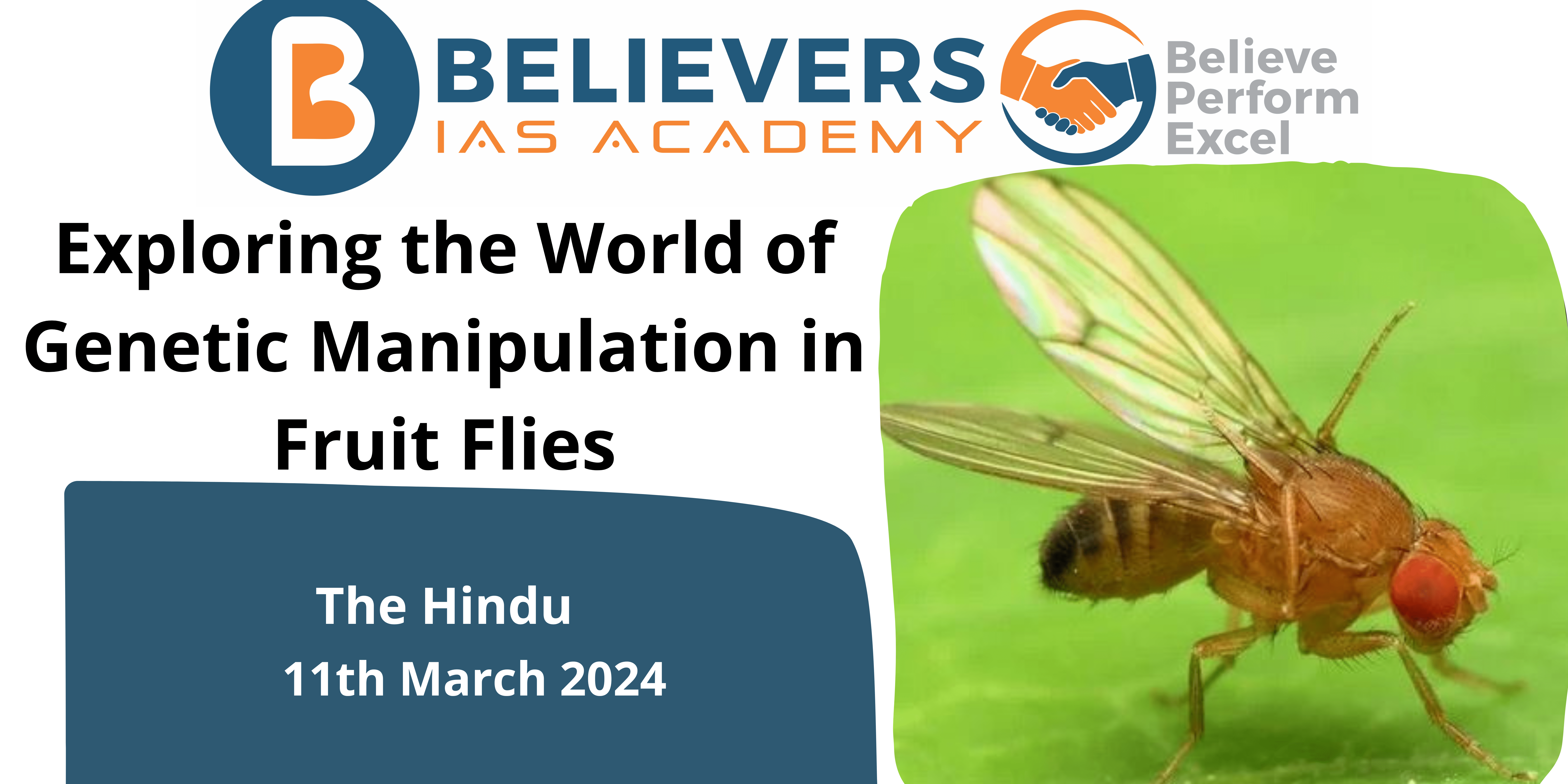Exploring the World of Genetic Manipulation in Fruit Flies
Why in news?
Fruit flies have been a staple in genetics research for over a century, leading to numerous breakthroughs. Recently, under a research done by Cambridge University and the California Institute of Technology, it showed ability to induce asexual reproduction in sexually reproducing fruit-fly species.
Relevance:
GS-03 (Science and technology)
Asexual Reproduction:
- It is a mode of reproduction in which a new offspring is produced by a single parent.
- The new offspring produced are genetically and physically identical to each other (clones of their parents).
- Asexual reproduction is observed in both multicellular and unicellular organisms.
- This process does not involve any kind of gamete fusion and there won’t be any change in the number of chromosomes either.
- It will inherit the same genes as the parent, except for some cases where there is a chance of a rare mutation occurring.
- Asexual reproduction has evolved independently times.
- It may proceed via
- Release of mitotically produced propagules – plant propagules or sponge gemmules.
- Budding – plants, many Cnidarians
- Fragmentation and regeneration – sponges, starfish, cnidarians, annelids, tunicates.
- Parthenogenesis: some insects, some fish, some amphibians, some reptiles, etc
What is Parthenogenesis:
- Parthenogenesis, or fatherless reproduction, is an asexual reproduction in which a female can produce an embryo without fertilizing an egg with sperm.
- In Greek, it means the virgin creation.
- It occurs naturally in some jawed vertebrates such as the whiptail lizard, but it is an unnatural event in mammals.
- Recent studies on fruit flies, specifically Drosophila mercatorum, have shed light on the genetic mechanisms underlying this phenomenon. By comparing genetically distinct fruit-fly species, researchers identified genes responsible for triggering parthenogenetic development in unfertilized eggs.
- This discovery represents a remarkable leap in our understanding of reproductive biology and genetic manipulation.
Deciphering the Genetic Code:
- Genetic manipulation relies on a thorough understanding of the DNA and RNA molecules that form the basis of all life.
- The intricate structure of DNA, composed of millions of base-pairs arranged in chromosomes, encodes the blueprint for an organism’s development and function.
- RNA, a complementary molecule to DNA, plays a crucial role in translating genetic information into proteins, the building blocks of life.
- By pinpointing specific genes involved in parthenogenesis, researchers were able to engineer asexual reproduction in fruit flies, paving the way for novel applications in genetic research.
Engineering Asexual Reproduction:
- The process of inducing asexual reproduction in fruit flies involved precise modifications to the genome of Drosophila melanogaster, a commonly used species in genetics research.
- By manipulating the expression levels of key genes associated with parthenogenesis, researchers were able to generate offspring from unfertilized eggs.
- This groundbreaking achievement not only challenges our understanding of reproductive biology but also opens new avenues for genetic engineering and biotechnology.
Applications:
- The implications of inducing parthenogenesis extend beyond basic research to practical applications, particularly in pest control strategies.
- Traditional approaches to pest management, such as irradiation or genetic editing, may inadvertently select for facultatively parthenogenetic individuals, limiting the effectiveness of these methods in the long term.




